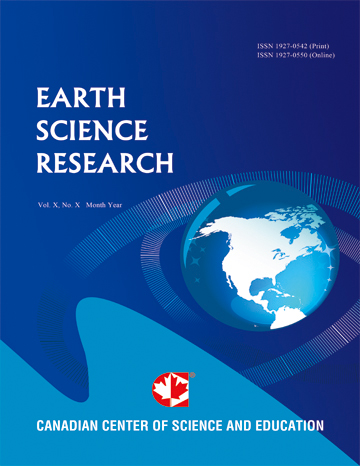Heavy Mineral Characteristics and Their Implication for Provenance of the Middle to Upper Triassic on the Northwest Margin of Junggar Basin, North China
- Miao He
- Liwei Zhang
- Jianxin Yao
- Shuai Li
- Qi Li
Abstract
Heavy minerals are extremely sensitive indicators of provenance. Applying the methods of heavy mineral combination analysis, content distribution analysis, SPSS statistical component analysis, and correlation analysis, 18 heavy minerals are identified in the northwestern margin of the Junggar Basin (NW Junggar). According to the analysis of the heavy mineral characteristics and coefficients, 4 heavy mineral combinations are developed in the study area: Zircon-tourmaline-monazite-apatite-anatase, rutile-ilmenite-leucoxene-apatite-galenite, hematite-limonite-pyrite, and magnetite-epidote-hornblende. Previous results predicted that source rocks consist of intermediate-acidic magmatite, sedimentary rocks and metamorphic rocks, and intermediate-acidic magmatite is considered to be the main source rock. Furthermore, combined with the geological background of NW Junggar, Qier-Halaalat Mountain, which belongs to the Zaire Mountain front, is shown to be the provenance of the study area. The main sources of sediments are flesh-red granite, grey and greyish-green andesite, andesitic-porphyrite, grey and grayish-black tuff, siltstone, and sandstone of the Lower Carboniferous Tailegula Formation. Additionally, because of the high content of the angular-subangular and subangular-subrounded heavy mineral grains, these heavy minerals are both from near and distal provenance, with most being near-provenance deposits. During the process of provenance propulsion on the margin of the basin, clastics are mixed together and affected by regional dynamic metamorphism, which is probably the main reason for the existence of the metamorphic component.
- Full Text:
 PDF
PDF
- DOI:10.5539/esr.v6n2p65
Index
- ACNP
- Aerospace Database
- BASE (Bielefeld Academic Search Engine)
- Civil Engineering Abstracts
- CNKI Scholar
- EuroPub Database
- Excellence in Research for Australia (ERA)
- Google Scholar
- Harvard Library
- IDEAS
- LOCKSS
- Mendeley
- MIAR
- NewJour
- PKP Open Archives Harvester
- Scilit
- SHERPA/RoMEO
- Standard Periodical Directory
- UCR Library
- Ulrich's
- WorldCat
Contact
- Lesley LuoEditorial Assistant
- esr@ccsenet.org
